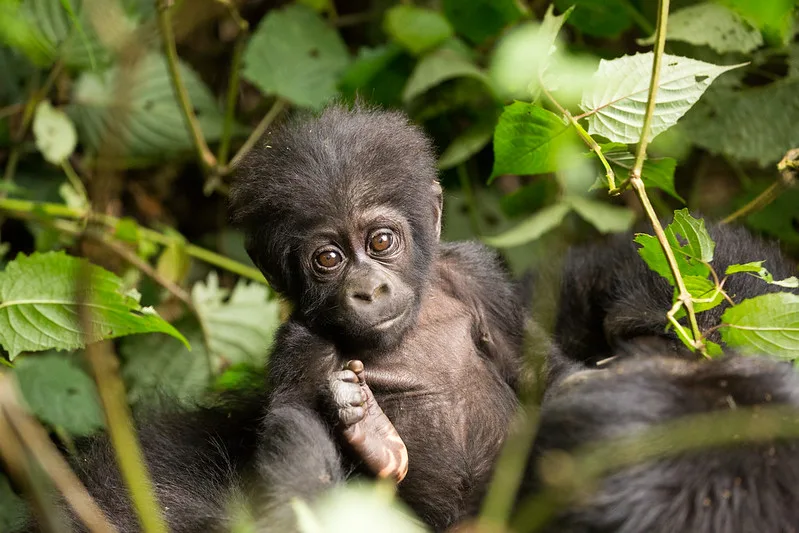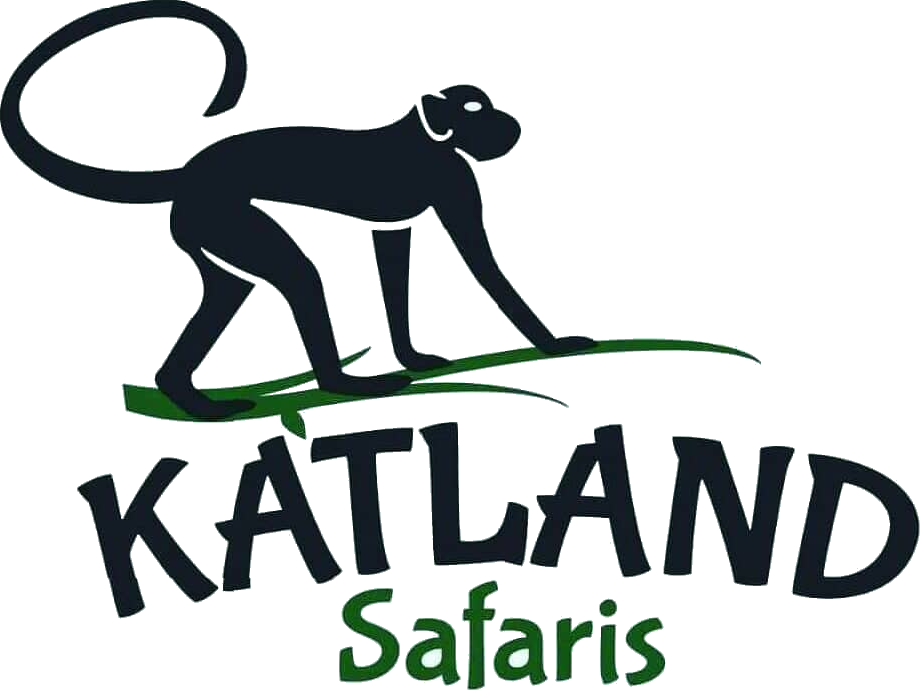Bwindi Impenetrable National Park | Gorilla Trekking | Batwa Community Experience | Gorillas in Bwindi
Bwindi Impenetrable National Park 2025 is a world heritage site and home to half of the remaining population of mountain gorillas. If your dream is to look into the eyes of mountain gorillas, then Bwindi’s impenetrable national game park is the best destination to make your dreams come true. Bwindi is home to more than half the population of the world’s remaining endangered mountain Gorillas and this makes Bwindi one of the most popular destinations and conservation areas in Uganda.
Location
Bwindi Impenetrable National Park 2025 is located in southwestern Uganda on the edges of the Rift Valley on the border of Rwanda and the democratic republic of Congo, covering an area of 331 square kilometers within the Districts of Kabale, Kisoro, and Kanungu. The word “Bwindi” in the “Batwa” local language means darkness and taking a hike through this impenetrable forest reveals why the forest was named Bwindi.
Bwindi is characterized by steep hills and narrow valleys, with a general incline from the north and west to the high deeply dissected south and southeast. 60% of the park is over 2,000 m high. Together with some remnant lowland forest outside the boundary, the Park is an important water catchment area serving surrounding agricultural lands. It has rivers and swamps inside like the Nsongi River, river Rushaga, and Mubwindi in the center of the south.
Climate
Bwindi experiences a tropical climate with two rainfall seasons that’s from March to May and September to November. The coldest period in Bwindi is June and July, while the wet seasons are March-May and September-November with a total annual rainfall of up to 2390mm. Bwindi is chilly in the morning and at night with average temperatures that can be handled by any visitor.
Vegetation
Bwindi forest is currently one of the most diverse forests in East Africa, with more than 200 tree species, with more than 104 fern species. In recognition of this, Bwindi is among Africa’s 29 most important forests for conserving plant diversity. Bwindi is one of the few large expanses of forest in East Africa where lowland and montane vegetation communities meet.
The hillsides which are mist-covered are sheltered by one of the ancient and very biologically varied rainforests in Uganda that dates back to more than 25,000 years. Besides being home to the endangered mountain gorillas, Bwindi is a habitat for other wildlife species including chimpanzees, birds, elephants, monkeys, and antelopes.
The forest is thick and impenetrable and at times paths are created by guides using pangas as you move on. Therefore, one requires a certain level of physical fitness to navigate through the terrines of this magnificent forest while looking for Gorillas in Bwindi.

The Gorilla Trekking Adventures in Bwindi Impenetrable National Park | Gorillas in Bwindi
Bwindi Impenetrable National Park 2025 is home to now nineteen Gorilla families that can be tracked by tourists in a day, each family can be trekked by only eight tourists per move intended to conserve the gentle giants. The gorilla trek can take anywhere from 1 hour to eight hours and the search starts from where the gorillas were last seen the previous evening. When found, each visitor is allowed not more than one hour to spend some time with the gorillas taking pictures and short videos to share with loved ones back home.
The park has 4 tourism sectors, Rushaga Nkuringo, Buhoma, and Ruhija sector. This gorilla trekking activity in any of the above sectors starts in the morning with a briefing by the park rangers, at the park before penetrating the impenetrable forest to have a glance at these endangered gentle giants. This being a highland, tropical rain forest, the trekking may involve walking under steep, slippery, and muddy conditions and sometimes with rain overhead. So, you need to carry good walking boots, rain jackets, insect repellents, and packed lunch, while going for this activity.
Gorilla Habituation Experience | Gorillas in Bwindi
Bwindi Impenetrable National Park 2025 is the perfect destination for the Gorilla habituation experience. Up on trekking and reaching the gorillas, Visitors are given not more than four hours to stay up close with the gorillas, and with researchers, they are given a chance to learn how gorillas spend their days, how they feed, take care of young ones, gather for food and so much more. The Gorilla Habituation Permit costs 1500.00 dollars per person per trek.
The four hours start counting as soon as the gorillas are found.
Gorilla families in Bwindi Impenetrable Forest National Game Park
With slightly over 1006 mountain gorillas remaining in the world, Bwindi is home to more than half of the world’s total gorilla population with the majority of these living within the different sectors of the Bwindi Impenetrable Forest National Park a renowned world heritage site in Uganda.
For each gorilla family, a maximum of eight (8) gorilla permits are offered for gorilla trekking an experience during which tourists get a chance to visit these amazing hairy forest Giants in their natural habitat. Because mountain gorillas do not stay in the same place for more than one night and move to new places each day, during the gorilla trekking safari experience you will have to walk through the forests for 2 to 4 hours searching for them.
Gorilla families in Bwindi’s impenetrable forest include
Mubare Gorilla Family – Buhoma Habinyanja Gorilla Family – Buhoma Rushegura Gorilla Family – Buhoma, Bitukura Gorilla Family- Ruhija, Oruzogo Gorilla Family – Ruhija, Nkuringo Gorilla Family – Nkuringo, Nshongi Gorilla Family – Rushaga, Mishaya Gorilla Family – Rushaga, Kahungye Gorilla Family – Rushaga, Bweza Gorilla Family- Rushaga, Busingye Gorilla Family – Rushaga, Kyaguriro Gorilla Family
Other tourist activities in Bwindi Impenetrable Forest National Game Park.
Birding safaris.
Besides gorilla trekking, Bwindi is one of Africa’s best destinations for birding safaris. A total of over 350 bird species were recorded with 23 of them Albertine rift endemics. This forest is endowed with a variety of bird species and most of them are rarely seen in other places. Bwindi hosts over 350 species of birds and most of them are Albertine rift endemics. Among the beautiful species that are found in this great forest include. The Short-tailed Warbler and Blue-headed Sunbird as well as seven IUCN red data listed species among others.
Community and cultural encounters
The National Park lies in one of the country’s most densely populated rural areas, with figures ranging between 160 and 320 people/km2 at different locations around the forest. The local people around the area are Bakiga, Bafumbira, and Batwa. They cultivate the land immediately surrounding the park. Batwa families live as landless laborers following their eviction from the forest in 1964. They were completely dependent on forest resources. Initially, there was strong opposition to the loss of forest resources from the local people who were also excluded from decision-making about the forest, but most now appear to respect the Park and show constraint in their use of its resources. Some percentage of the money for gorilla permits goes to cater to the well-being of these people like building schools and hospitals. More so, the local people are working at park headquarters as rangers, guides, and porters. This has created a lot of awareness among people about the importance of conserving the forest and the mountain gorillas. Increased conservation measures have led to an improved number of great primates.
Accessibility of Bwindi impenetrable national park.
Bwindi is located in the south-western part of Uganda approximately 540km from Kampala and the easiest means of transport to Bwindi is by road. The park can be accessed from Kampala through Mbarara in about 6 to 8 hours of driving from Queen Elizabeth National Park in just 2 to 3 hours, or from Kabale town to the southern in just 1 to 2 hours. Using a 4 by 4 car customized for safaris is the cemented way to take on Bwindi Impenetrable Forest by road. However, a daily bus service leaves Kampala for Butogota via Rukungiri and Kihiihi.
The route from Kabale to Nkuringo covers a distance of about 105 km from Kabale town and it takes about 4 hours to get to the mountainous Murram road. Many tourists take up nights in Kisoro town and the remaining distance is about 80km from Kabale before Nkuringo. Kisoro road is a meandering 35km and takes about 1-1.5 hours.
There is another route from Kampala – Kabale – Kanungu to Buhoma. The route has a tarmac highway to Kabala and covers an area of about 414 km and it’s a 5-6 hour’s drive. The next route has a Murram road and is about 120km. The route goes through Kanungu as well as Kanyantorogo and it takes about 4-5hours.
By Air
Bwindi National Park is served by 3 airfields at Kihiihi, Kayonza for the northern area and Nyakabande found in Kisoro for people going to track mountain gorillas within the southern area Rushaga and Nkuringo. Therefore, you can choose to fly from Entebbe or Kajansi airstrip to the tarmac airstrip found in Kisoro.
Accommodation options in Bwindi Impenetrable Forest.
There are different types of accommodations in Bwindi ranging from Budget, midrange, and Luxury. Each region has different lodges that offer quality services to visitors, in Buhoma region; examples of lodges include Buhoma Lodge, Silverback Lodge, Jungle View Lodge, and Buhoma Community Rest Camp.
In Rushaga, lodges include Chameleon Hill, Gorilla Safari Lodge, Nsongi Camp, Lake Mutanda, and Kisoro Traveller’s Rest. In Nkuringo there is Clouds Lodge and Nkuringo Gorilla Camp. In the Ruhija region, there is the Ruhija gorilla lodge and gorilla mist camp.
The beds range from double, twin to single. The lodges offer services like Meals on full board or half board, and cultural performances. Some lodges are located on lake shores like the Chameleon Hill Lodge and Lake Mutanda Lodge and they have activities like boat cruises to different highlands. All this experience can be added to gorilla trekking.



